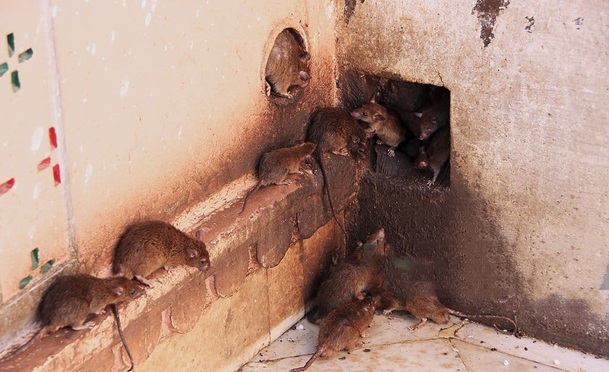Aizawl: The Mizoram government has sounded an alert after rodent attacks damaged crops in three districts, raising fears of a famine-like situation.
More than 800 jhum cultivators have already been affected, officials from the Agriculture Department said on Thursday.
Deputy Director (Plant Protection) Lalrindiki said the infestation is being linked to the phenomenon of ‘Thingtam’, which occurs once every 46–48 years with the flowering of bambusa tulda (rawthing bamboo).
The next flowering cycle is expected in 2025.
Reports of rodent outbreaks have come in from multiple villages in Mamit district, along with two in Lunglei and one in Saitual.
So far, 158 hectares of land out of 2,500 hectares under jhum cultivation have been damaged, largely rice and soybean fields. Mamit, which shares borders with Tripura and Bangladesh, is the worst-hit, with 769 farmers across 45 villages suffering crop losses.
To control the situation, the Agriculture Department has deployed teams to distribute rodenticides and train farmers and village leaders in their use.
Awareness drives on mass poisoning of rodents are also underway, and district officers have been asked to submit weekly updates.
Officials said the attacks remain confined to jhum paddy and soybean fields and have not yet spread to wet rice cultivation.
Mizoram last experienced a major rodent outbreak in 2022, when nine districts were affected.
A more severe crisis occurred in 2007, when the flowering of Melocanna baccifera bamboo triggered widespread rodent multiplication and food scarcity.
Preparations and central assistance at the time helped avert casualties.
ALSO READ: Northeast’s rich heritage on display at PM’s Mementos e-Auction 2025
Agriculture is the backbone of Mizoram, with nearly 70 per cent of its population depending on it.
Though slash-and-burn jhum farming remains common, the government has been promoting horticulture and long-term plantations such as pineapple, grapes and betel nut to improve yields and resilience.
Historically, famine has played a crucial role in Mizoram’s political journey.
The ‘mautam’ famine of the 1950s and the Centre’s perceived neglect of the crisis sparked a two-decade insurgency led by the Mizo National Front.
The conflict ended with the 1986 peace accord, paving the way for Mizoram to attain statehood the following year.















